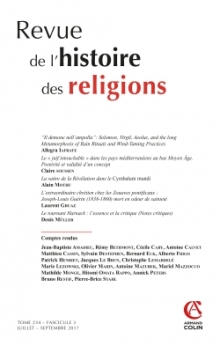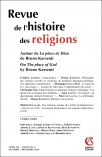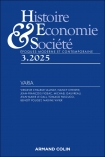
Revue de l'histoire des religions (3/2017)
Pour acheter ce numéro, contactez-nous
Recevez les numéros de l'année en cours et accédez à l'intégralité des articles en ligne.
L’article se propose de réexaminer, quarante ans après qu’elle a été formulée, la thèse de l’« intouchabilité » dont les juifs auraient fait l’objet dans l’espace méditerranén à la fin du Moyen Âge. Certaines municipalités y prirent en effet des dispositions interdisant aux juifs de toucher les marchandises sur les étals des marchés, révélant une aggravation de la condition qui leur était faite. Aujourd’hui, une relecture de la documentation hébraïque, latine et catalane, incite à nuancer le propos et surtout à faire toute sa place à l’attitude des autorités juives à l’égard des chrétiens et des convertis car elle révèle, en miroir, des préventions identiques à celles des autorités chrétiennes. Enfin, autant qu’une affaire religieuse et anthropologique, l’« intouchabilité » des juifs semble ressortir à l’économique et au politique.
Forty years after the initial formulation of the theory, this paper attempts to examine the notion that Jews were considered untouchable in some Mediterranean countries at the end of the Middle Ages. Some municipal authorities issued edicts forbidding Jews to touch the products at the market, revealing the hardening of their condition. Today, when we look at the Hebrew, Latin and vernacular documents, we see that it is important to underline the attitude of the Jewish authorities towards the Christians and the converts, showing the same fear or distrust as the Christians’ attitude towards the Jews. The Jews being untouchable is a matter of religion and anthropology, but also of economics and politics.

